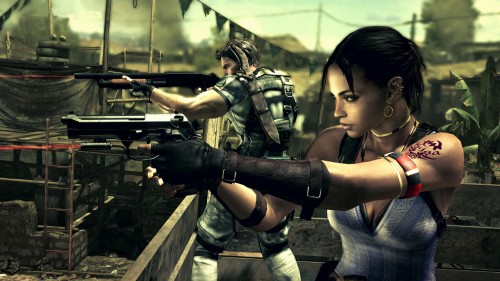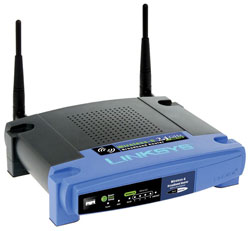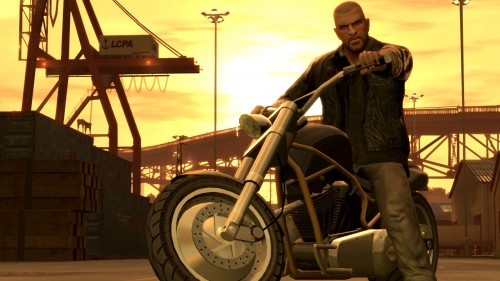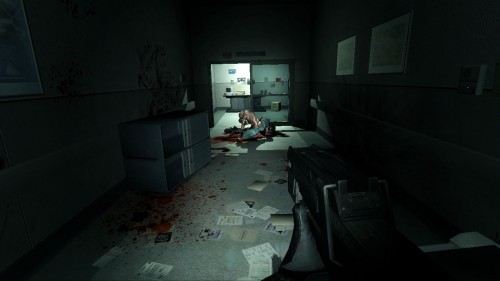Hard to believe that it’s been the best part of a year since Final Fantasy XIII went multiplatform and Nintendo stunned the world by reaching new levels of mediocrity, but E3 has been restored to its former glory and with it came three conferences from the console manufacturers infused with announcements and yes, bitter tears. Same format as 2007 and 2008, in chronological order:
The first was Microsoft, which started us off with a strong showing. We knew some of what was going to be there, but there were no complete leaks like last year’s NXE unveiling, and most of what we knew was in name only. It’s fairly normal at this point to go into E3 without much knowledge of what we’ll be playing on our 360s at the end of the year, and we can now see a strong line-up taking shape: Halo 3: ODST, Left 4 Dead 2, Crackdown 2, Forza 3, and the re-emergence of a fantastic-looking Splinter Cell: Conviction, which has got me all hot and bothered for the series again. Modern Warfare 2’s footage wasn’t as mind-blowing as COD4’s from two years ago, but my preorder’s in.
The headlines will undoubtedly be grabbed by two unveilings, though. The first is Metal Gear Solid: Rising, which is a huge PR coup for Microsoft but isn’t a mainline Metal Gear and so isn’t quite the shock of last year’s FFXIII reveal; still, I like MGS4’s Raiden, so colour me interested. Secondly, we’ve got Project Natal, which I don’t expect to work nearly as well as the video suggested, but if it does it’s certainly an incredible technical achievement. Expect much talk about that over the coming months.
Plus Microsoft got the fucking Beatles to show up. God knows how much that cost…
Criticisms? As a closet fan of the Halo novels I’d like to have seen more than a teaser of Halo: Reach, but I understand that ODST is the one that they want you to care about for now. But mainly, where was Rare? The token Killer Instinct and Blast Corps rumours of course didn’t come true, but no new Perfect Dark? Not even another Viva Piñata? Hello?
But that aside, Microsoft did what it had to do with aplomb. The 360 has a great selection of games for this year and we now know that stuff like Alan Wake is finally coming in 2010, and MS is even showing signs of making a serious attempt at coming out from the bald space marine niche where it’s been happy to exist. This one gets a solid A.
Nintendo had simultaneously the most and the least to prove going into E3, sitting comfortably at the top of the sales charts but also leaving much of its traditional audience – or at least the ones who can’t convince themselves that Smash Bros is a good game – underwhelmed, exemplified by last year’s showing.
Super Mario Galaxy 2, Team Ninja’s Metroid, and Golden Sun DS. That pretty much summed up what we got that I’m interested in, and I really am gagging for a go on Metroid. It’s better than last year’s and the first two are undoubtedly AAA titles, although it still had a depressing emphasis on games that our demographic probably doesn’t care about. No great DSiWare content? No Virtual Console for DSi? Nothing entirely new for the hardcore audience? Instead, we get something to monitor your pulse and more Wii Fit.
I can’t in good conscience slate a conference that unveiled both a proper new Mario and Metroid, so I’m going to give this one a B-.
Sony‘s was a show of two halves for me. It started off with Uncharted 2, which looks spectacular, and if it’s nearly as good as the first game – there’s no reason why it shouldn’t be – it’ll be a certain purchase. MAG didn’t demonstrate particularly well because it’s a bit slow and complicated for this context, and I’m not convinced that the headset-free PSN is the best place for such a co-op game, but I love my multiplayer shooters and I’m intrigued.
It’s good to see renewed support for the PSP, even if I won’t be buying a PSP Go, and maybe this commitment from Sony coupled with reduced development costs will see a renaissance in the system. I hope so, because I’m a fan.
Final Fantasy XIV was a surprise, to say the least, but I’d love to hear the difference in cheers between when it was announced and when everyone saw the little ‘Online’ under the title. Not the megaton announcement that XIII was last year, and the slight disappointment was compounded by what came next. The tech demo for the Wii Remote waggle wand lost some of its impact coming after Microsoft’s controller-free controls and a further demonstration of Wii Motion Plus and just went on for far too long, particularly when there wasn’t actually a game to come with it. The same goes for ModNation Racers, which wasn’t even that impressive and seemed to last for an eternity – I wanted to kill myself when he promised to create a track “in less than five minutes”. I was reminded of the endless demonstration of Gran Turismo HD from the infamous E3 2005 showing.
It ended very strongly with Gran Turismo 5, which I don’t really care about as I’m not exactly a fan of realistic racers, and the holy duo of The Last Guardian and God of War III. It goes without saying that both of those are must-haves, and I’m just disappointed that it looks like we’ll have to wait until 2010 for both of them.
Much like the Microsoft one it showed a host of great games, and it only really suffered from the slack middle section. That doesn’t stop it getting an A as well, though.
Overall, then, a far better show than last year’s, and fans of all platforms will have come away with something worthwhile even if this year’s show has pretty much confirmed motion controls as the way of the future. And hey, no sales graphs either. Gaming needs to make a song and dance about itself like this once in a while, so let’s enjoy the rest of the show.
Until next year…


 My solution was to buy a
My solution was to buy a 
